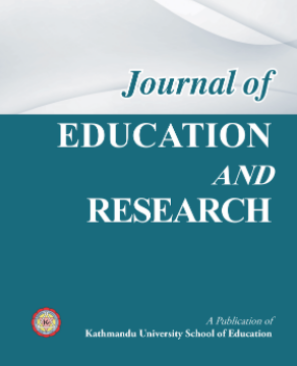
Role of Professional Associations in Benin Dual Apprenticeship
Original Article
Journal of Education and Research, Volume 11, Issue 1, 2021, 77-96, https://doi.org/10.51474/jer.v11i1.500
Publication date: May 18, 2021
Views: 405 | Downloads: 268
How to cite this article
APA
In-text citation: (Nouatin, 2021)
Reference: Nouatin, G. S. (2021). Role of Professional Associations in Benin Dual Apprenticeship. Journal of Education and Research, 11(1), 77-96. https://doi.org/10.51474/jer.v11i1.500
Reference: Nouatin, G. S. (2021). Role of Professional Associations in Benin Dual Apprenticeship. Journal of Education and Research, 11(1), 77-96. https://doi.org/10.51474/jer.v11i1.500
Vancouver
In-text citation: (1), (2), (3), etc.
Reference: Nouatin GS. Role of Professional Associations in Benin Dual Apprenticeship. Journal of Education and Research. 2021;11(1):77-96. https://doi.org/10.51474/jer.v11i1.500
Reference: Nouatin GS. Role of Professional Associations in Benin Dual Apprenticeship. Journal of Education and Research. 2021;11(1):77-96. https://doi.org/10.51474/jer.v11i1.500
AMA
In-text citation: (1), (2), (3), etc.
Reference: Nouatin GS. Role of Professional Associations in Benin Dual Apprenticeship. Journal of Education and Research. 2021;11(1), 77-96. https://doi.org/10.51474/jer.v11i1.500
Reference: Nouatin GS. Role of Professional Associations in Benin Dual Apprenticeship. Journal of Education and Research. 2021;11(1), 77-96. https://doi.org/10.51474/jer.v11i1.500
Chicago
In-text citation: (Nouatin, 2021)
Reference: Nouatin, Guy Sourou. "Role of Professional Associations in Benin Dual Apprenticeship". Journal of Education and Research 2021 11 no. 1 (2021): 77-96. https://doi.org/10.51474/jer.v11i1.500
Reference: Nouatin, Guy Sourou. "Role of Professional Associations in Benin Dual Apprenticeship". Journal of Education and Research 2021 11 no. 1 (2021): 77-96. https://doi.org/10.51474/jer.v11i1.500
Harvard
In-text citation: (Nouatin, 2021)
Reference: Nouatin, G. S. (2021). Role of Professional Associations in Benin Dual Apprenticeship. Journal of Education and Research, 11(1), pp. 77-96. https://doi.org/10.51474/jer.v11i1.500
Reference: Nouatin, G. S. (2021). Role of Professional Associations in Benin Dual Apprenticeship. Journal of Education and Research, 11(1), pp. 77-96. https://doi.org/10.51474/jer.v11i1.500
MLA
In-text citation: (Nouatin, 2021)
Reference: Nouatin, Guy Sourou "Role of Professional Associations in Benin Dual Apprenticeship". Journal of Education and Research, vol. 11, no. 1, 2021, pp. 77-96. https://doi.org/10.51474/jer.v11i1.500
Reference: Nouatin, Guy Sourou "Role of Professional Associations in Benin Dual Apprenticeship". Journal of Education and Research, vol. 11, no. 1, 2021, pp. 77-96. https://doi.org/10.51474/jer.v11i1.500
ABSTRACT
This paper analyses the involvement and the role played by a professional association in Benin dual apprenticeship. This research utilised a qualitative method using literature analysis with desk research and a semi-structured interview. In total, 56 respondents from staff members of professional associations at local, district and national levels, staff of the public sector, donor agencies and craftsmen were selected through purposive and snowball sampling techniques. To analyse data, I used the theory of institutional change, games models or strategic interactions theory and the conceptual framework of the curriculum value chain of the education programme. Results of the research show that the institutionalisation process of professional associations in the crafts sector started with professional photographers, hairdressers and sewing/cutting in 1950. Professional associations have a strong involvement in the implementation phase of the CQP programme. In the curriculum design phase, they are involved at a moderate level. And in the evaluation phase, they have low involvement. Such involvements in the last two phases can be understood by the low literacy level of most craftsmen who work in the informal sector.
KEYWORDS
REFERENCES
---
LICENSE
This work is licensed under a Creative Commons Attribution 4.0 International License.
